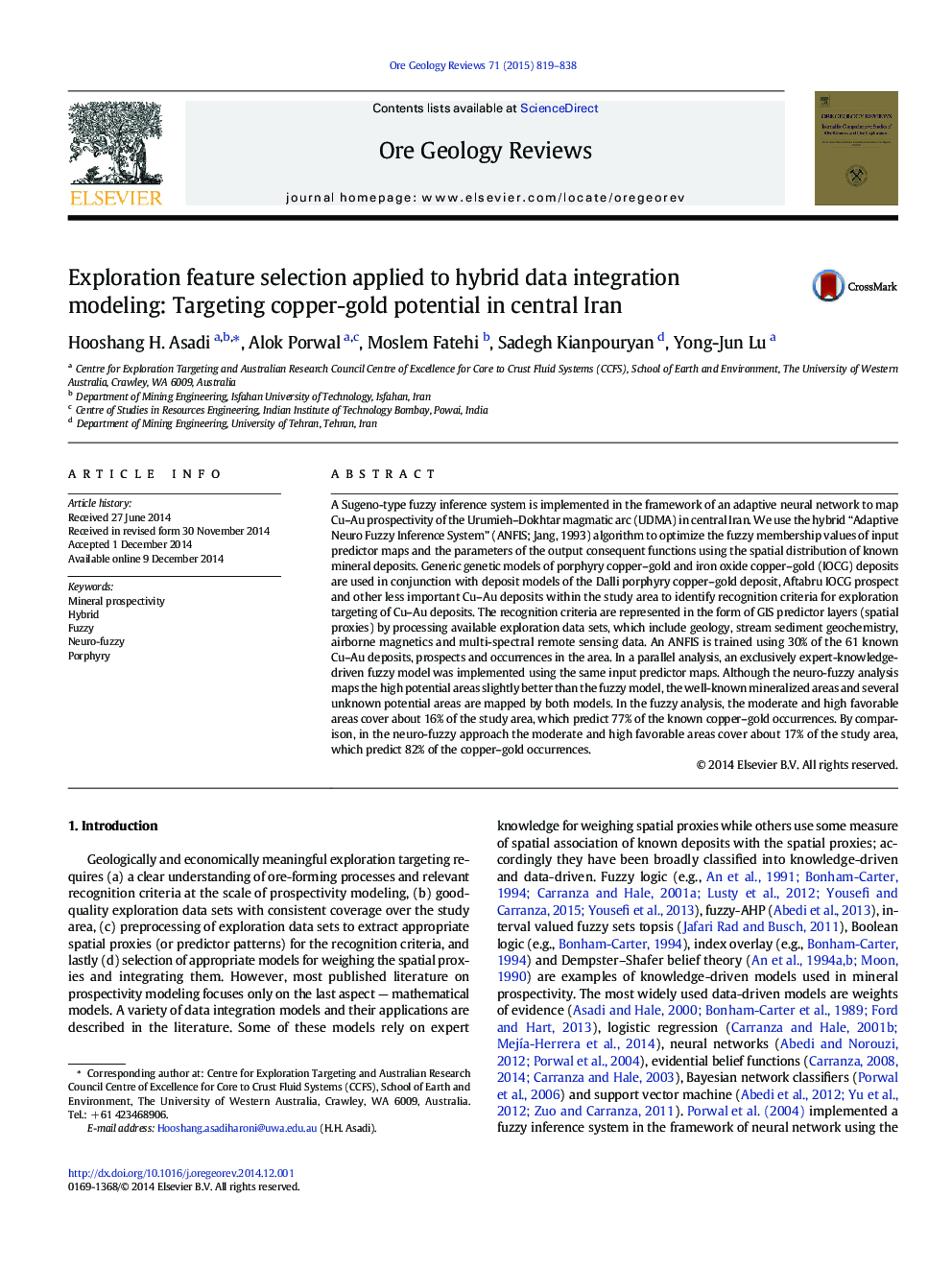| کد مقاله | کد نشریه | سال انتشار | مقاله انگلیسی | نسخه تمام متن |
|---|---|---|---|---|
| 4697053 | 1637233 | 2015 | 20 صفحه PDF | دانلود رایگان |
• Deposit characterization is used to define recognition criteria for Cu–Au exploration.
• Regional exploration data sets are processed to search for Cu–Au exploration features.
• An adaptive neuro-fuzzy inference system is implemented to map Cu–Au potential in central Iran.
• Adaptive neuro-fuzzy method is compared with fuzzy-logic method.
A Sugeno-type fuzzy inference system is implemented in the framework of an adaptive neural network to map Cu–Au prospectivity of the Urumieh–Dokhtar magmatic arc (UDMA) in central Iran. We use the hybrid “Adaptive Neuro Fuzzy Inference System” (ANFIS; Jang, 1993) algorithm to optimize the fuzzy membership values of input predictor maps and the parameters of the output consequent functions using the spatial distribution of known mineral deposits. Generic genetic models of porphyry copper–gold and iron oxide copper–gold (IOCG) deposits are used in conjunction with deposit models of the Dalli porphyry copper–gold deposit, Aftabru IOCG prospect and other less important Cu–Au deposits within the study area to identify recognition criteria for exploration targeting of Cu–Au deposits. The recognition criteria are represented in the form of GIS predictor layers (spatial proxies) by processing available exploration data sets, which include geology, stream sediment geochemistry, airborne magnetics and multi-spectral remote sensing data. An ANFIS is trained using 30% of the 61 known Cu–Au deposits, prospects and occurrences in the area. In a parallel analysis, an exclusively expert-knowledge-driven fuzzy model was implemented using the same input predictor maps. Although the neuro-fuzzy analysis maps the high potential areas slightly better than the fuzzy model, the well-known mineralized areas and several unknown potential areas are mapped by both models. In the fuzzy analysis, the moderate and high favorable areas cover about 16% of the study area, which predict 77% of the known copper–gold occurrences. By comparison, in the neuro-fuzzy approach the moderate and high favorable areas cover about 17% of the study area, which predict 82% of the copper–gold occurrences.
Journal: Ore Geology Reviews - Volume 71, December 2015, Pages 819–838
